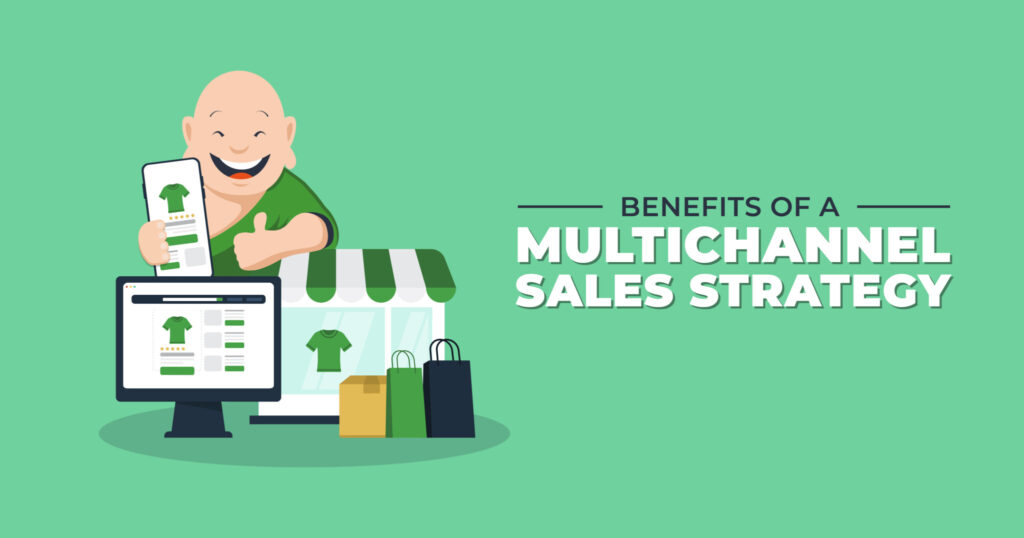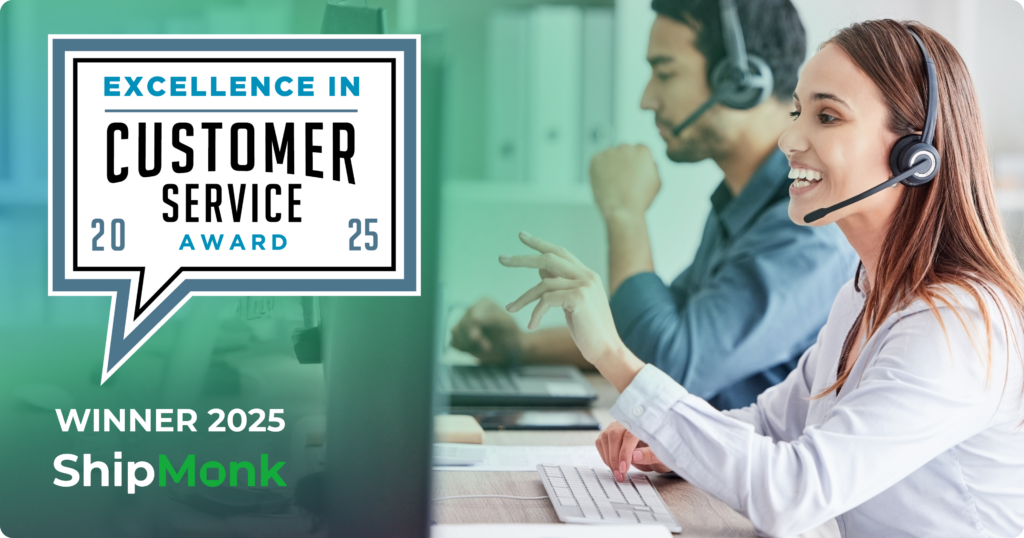We don’t need to tell you that today’s shoppers expect to find what they want online. They’re browsing on mobile phones, desktops, tablets, and their own two feet in brick-and-mortar stores. They’re researching before they purchase, and they’re purchasing wherever and whenever they see something they like. This multichannel shopping habit makes it difficult to reach consumers, particularly if your ecommerce business is currently taking a single-channel approach to marketing and sales.
According to a study conducted by Harvard Business Review, 73% of retail shoppers use multiple channels to shop. Another study by Retail Dive found that the average engagement rate of marketing campaigns using three or more channels was 18.96% (that’s the average across all channels!) while single-channel campaigns earned only 5.4%. If you’re not employing a multichannel sales strategy, you’re clearly missing out. But what, exactly is a multichannel sales strategy, and is it worth the investment?
What is a Sales Channel?
Today’s ecommerce brands have a myriad of choices to consider when selling their products. Digitally native brands start out with a website or online storefront, while small, local brands and retailers may start out with a single brick-and-mortar location and expand geographically, or move online from there. Sales channels include:
- Brand website — Most digitally native brands start with a well-designed website that thoroughly explains their brand and the features and benefits of their products. If their product selection is small, that may be all they need.
- Branded shopping platform — A shopping platform such as Shopify, BigCommerce, or WooCommerce simplifies sales for ecommerce brands and retailers that sell multiple product lines and categories. Shopping platforms also make it easier to integrate third-party apps such as payment systems, returns apps, fulfillment automation, and inventory management.
- Branded mobile app — Build your own mobile app to make shopping easier for consumers browsing on smartphones.
- Social commerce — Facebook, Pinterest, and Instagram used to be strictly places for inspiration and peer recommendations, with links that would redirect a consumer to a website or marketplace to make a purchase. Now, using Facebook Marketplace or Instagram Checkout, consumers can purchase directly within the social platform.
- Ecommerce marketplaces — Amazon, eBay, Google, Walmart, Houzz are huge online shopping malls that sell multiple brands including white label brands as well as their own private label brands. They attract millions of shoppers and thousands of sellers, but it can be difficult to qualify as a seller and to make your products stand out. In exchange for access to their huge customer base, you pay fees. Lots of fees. Before selling on Amazon, for example, make sure you understand the differences between Fulfillment by Amazon (FBA), Fulfilled by Merchant (FBM), and Seller Fulfilled Prime (SFP) before committing to any of them.
- Online retailers — If your product is sold by an online retailer such as Target, Best Buy, or Walmart, you’ve got a huge advantage in that your customers can purchase online and pick-up in-store. You also benefit from their traffic and the brand awareness you gain from being seen in their brick-and-mortar stores as well as online. Note that you’ll need to meet special requirements for retail/B2B fulfillment.
- Comparison shopping engines — The rise of Google Shopping, Shopzilla, Bing Shopping, and other comparison-shopping engines has made it important for brands to be priced competitively. If you can’t lower your price, then offer free shipping and mention it in your meta descriptions. Unexpectedly large shipping costs are the #1 reason for cart abandonment.
- Brick-and-mortar locations — Don’t discount the value of retail locations. 81% of customers research products online before actually purchasing them in stores. Even if a brick-and-mortar store does not have an online sales strategy, it should be using a multichannel marketing strategy.
What is a Multichannel Sales Strategy?
A multichannel sales strategy enables consumers to purchase your products in more than one place. Depending on the channels you choose, they may be able to make a purchase on your website, online shopping platform, in-store, on a mobile app, on Facebook, Instagram, or Amazon. The shopping experience and product assortment may vary depending on the channel, but the customer can engage with your brand and purchase your product wherever they happen to see it.
What is Not Multichannel Sales?
Multichannel sales is often confused with multichannel marketing and omnichannel sales, but there are subtle differences.
Multichannel marketing simply refers to marketing (not sales) on different digital platforms or media channels. Ecommerce businesses can (and should) promote their products through multiple channels, but don’t necessarily offer the ability to shop on all of their marketing platforms. Instead, if a consumer clicks on the video, ad, email, or search listing, they are directed to a shopping platform, website or app to shop. Multichannel marketing includes tactics such as email, instant messaging, display ads and pay-per-click ads, as well as traditional forms of media advertising such as television, radio and streaming services. Click-throughs and spikes in traffic are tracked to determine which ads and which channels and promotions generate the most traffic and the most sales.
Omnichannel sales is an all-encompassing, customer-centric strategy that gives consumers the same experience wherever they see the ecommerce brand’s marketing or shop for their products. Whether online or in-store, on desktops or mobile phones, via email, social media, or instant messaging, consumers will see personalized offers, retargeted ads, products and messages that reflect their interests. This strategy requires a significant investment in technology and infrastructure, which is why it’s easier for large retailers with deep pockets and natively digital brands that have a strong IT tech stack to build on. Smaller brands often start with a multichannel sales strategy, and work their way up to omnichannel sales.
Benefits of a Multichannel Sales Strategy
A multichannel sales strategy combines many of the same benefits as multichannel marketing and omnichannel sales strategies, without the steep investment in technology.
- Broader reach — If your products are available in several places, it makes sense that you’re reaching different customer segments than you would with a single sales channel. Not everyone has an Instagram account or shops on Amazon, so why put all your eggs in one basket? In addition, exposing your brand to different groups of potential customers offers you the opportunity to learn from them and perhaps diversify your product offering or sales strategy to meet their needs and build your customer base.
- Market presence — The more places your brand is seen, the higher your visibility within your market niche. Brand awareness is an intangible asset that can help you later, as potential customers move along the sales journey, from browsers to serious shoppers getting ready to make a purchase.
- Greater flexibility — When you sell products on multiple channels you can leverage their tools and algorithms to target certain customers, and test different products, promotions and marketing strategies. You also have the flexibility to turn channels on and off as your strategy shifts.
- Less risk — A multichannel sales strategy costs far less than an omnichannel approach, while still allowing you to spread your marketing dollars across multiple channels. Putting all your eggs in one basket (let’s say, the Amazon basket) requires a significant commitment to doing things their way, which may restrict your options with other channels. Then what happens if a server crashes, you are hit with a supply chain issue, or that single channel is no longer performing?
- Faster growth — Integrating a new sales channel is one of the quickest ways to boost revenue and grow your customer base. There is strength in numbers.
- Better customer experience — Customers appreciate the convenience of being able to purchase something right where they are, right when they see it, rather than being redirected to a website, where they may or may not find what they were looking for. A multichannel sales strategy caters to a wide range of needs, and a wider range of customers.
Challenges of a Multichannel Sales Strategy
While a multichannel sales strategy clearly can help you grow faster, it doesn’t come without challenges. Each channel has its own restrictions, requirements and tech integrations to manage. You may give up some control over your brand to meet their qualifications, and customers won’t get the exact same experience from channel to channel. It can also be tricky to track results and attribute sales to particular marketing efforts when customers see ads in multiple places.
Then there are the challenges with operations. How do you prioritize and fulfill orders when they’re coming in from different channels? Can your fulfillment center handle the growth and tech integrations? How do you manage inventory and forecast demand for each channel? Can you sell on Amazon and other channels at the same time?
As brands grow and move into a multichannel sales strategy, managing orders, inventory, and tech integrations becomes incredibly complex. This is often the time when brands switch from handling their own fulfillment to partnering with a third-party logistics (3PL) and fulfillment partner. ShipMonk is a tech-first 3PL that was built from the ground up to meet the fulfillment needs of multichannel (and omnichannel!) brands.
At ShipMonk, orders from multiple channels are synced, processed, and tracked through a single, robust software platform. Inventory is stored in one or more of our 12 global fulfillment centers, and managed through the same system. And you don’t need to worry about tech integrations because they partner with all the marketplaces, shopping platforms and third-party apps you’ll ever need. Best of all, they’ll handle all the integrations for you and customize your tech stack to fit your brand’s needs.
Which Sales Channels Should You Choose?
When deciding which sales channels to use, consider the types of products you sell and the shopping habits of your targeted customers. Start with the channels that most closely fit your brand. Consider marketing on multiple channels before launching a sales channel. That way you can identify the channels that bring in the most engaged customers who identify with your brand. Targeting these customers should lead to more conversions.
Next, look at the numbers. Surveys conducted by ChannelAdvisor show that whether consumers go online to research or actually buy something, 75% to 78% of them start their search either on Amazon or a search engine. 31% say they’ve “discovered” products on social media that they’ve gone on to purchase. These are powerful numbers.
How to Succeed at Multichannel Sales
As you add sales channels, make sure you’re giving each channel a fair chance to succeed. That means taking the time to optimize integrations, marketing, and operations to build traffic, convert customers, streamline sales, and manage inventory and fulfillment.
- Tech integrations — Understand what’s required of each channel, and what you’ll need to manage inventory, update products and monitor sales and engagement.
- Marketing — Leverage the tools and unique market strengths of each channel individually. Ensure that your marketing spend is adequate to gain sufficient visibility with your targeted consumers.
- Operations — Consolidate inventory so you (or your 3PL) can more easily manage it and avoid stockouts. Maximize conversions with compelling product listings and images, competitive prices, and shipping options.
- Fulfillment — Ensure that your fulfillment provider can meet the expectations of each channel including order processing, payments, returns, and on-time delivery.
- Monitoring — Set KPIs to monitor traffic and conversions for each channel. Collect data that will help you optimize each channel. Most importantly, continue to test and integrate new sales channels as your budget allows.
If you’re just dipping your toes into multichannel ecommerce sales and have questions about what you need and how to make it all work together, we’re here to help! We’ve helped hundreds of ecommerce brands and retailers optimize their multichannel fulfillment operations. Contact ShipMonk today!





